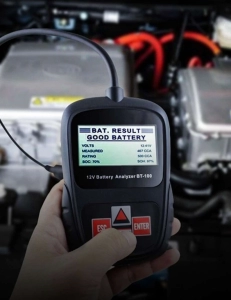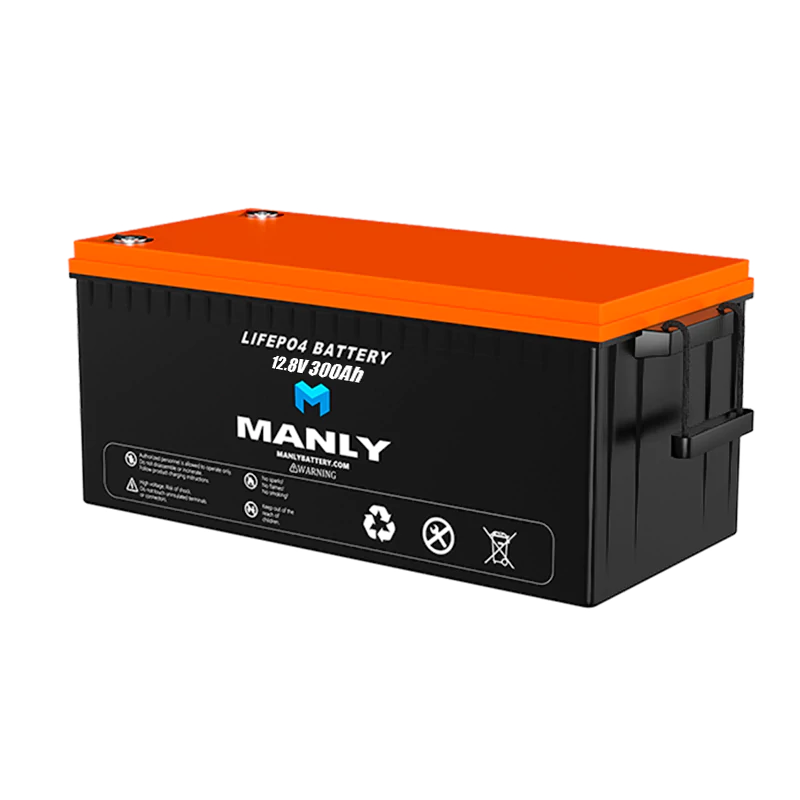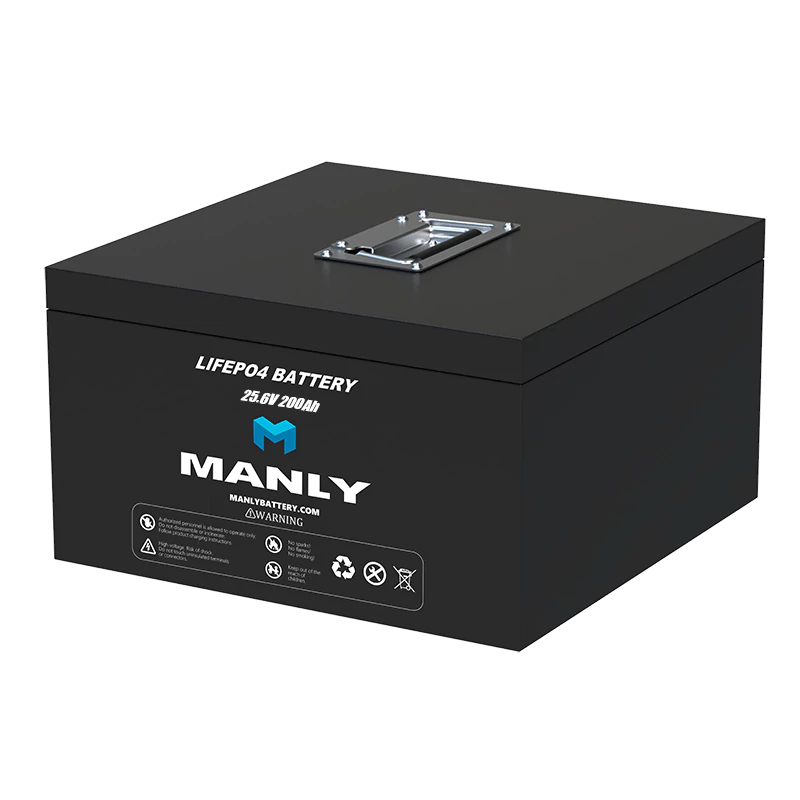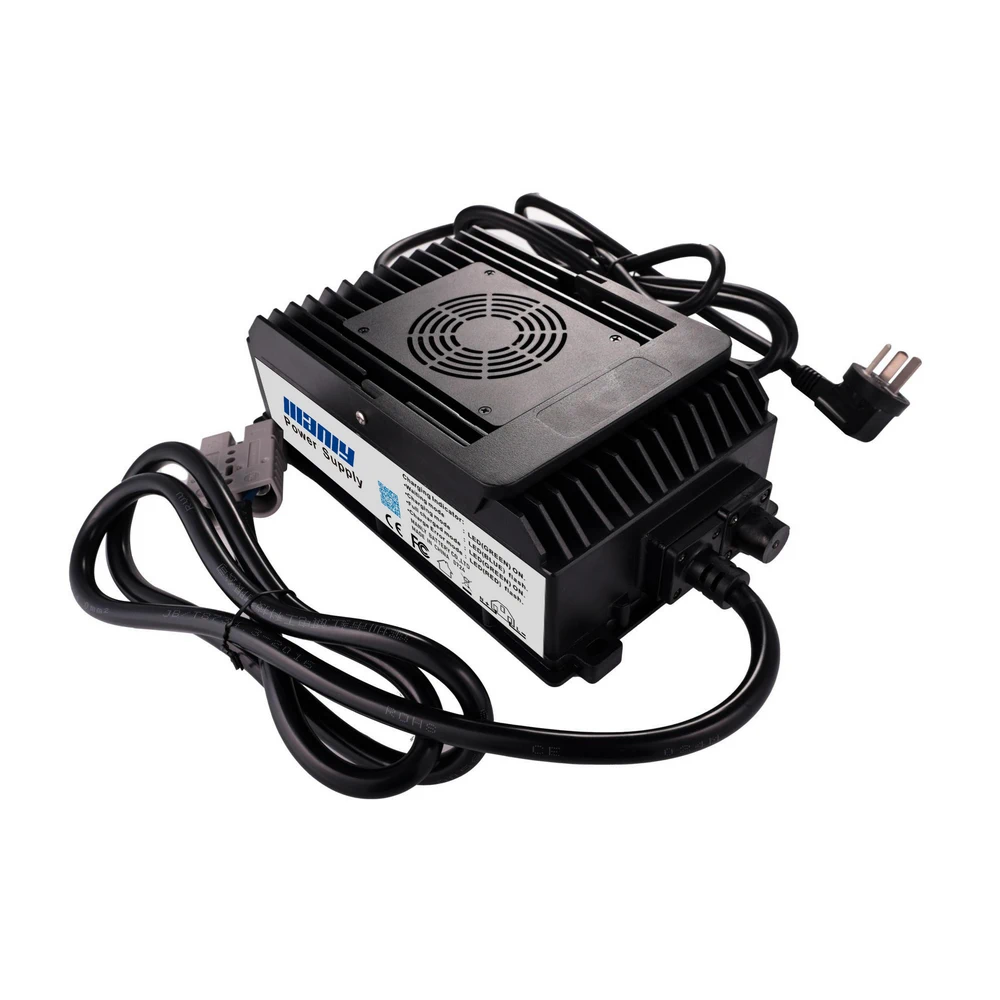Top Off Grid Solar Batteries 2025: Ultimate Guide
Table of Contents
- Top Off Grid Solar Batteries 2025: Ultimate Guide
- What are Off Grid Solar Batteries?
- Exploring Off Grid Solar Batteries
- What Makes a Best Off Grid Solar Batteries?
- How much do solar batteries cost?
- 2023 Navigating Solar Battery Prices: A Simple Guide
- Decoding Solar Battery Prices: Key Factors at Play
- How Do Off Grid Solar Batteries Work?
- Determining the Number of Off Grid Solar Batteries for Your Home
- How About If I Possess an Existing Solar System?
- What are the Best Off-Grid Solar Batteries?
- Learn More About Battery

What are Off Grid Solar Batteries?
We touched on this, but essentially, off grid solar batteries work as energy storage.When a solar panel collects sunlight and converts it to power, without a battery to store that power, it more or less needs to be directed to a device for use immediately, or it just dissipates. The panel itself doesn’t store any of the power it collects.Since solar panels only work when there is a fair amount of sunlight, and you won’t always be using devices off-grid to make use of the collected energy constantly, this produces problems.Using a battery to store unused energy means that the panel can collect energy throughout the day, and then when there isn’t light, but you still need to utilize a device, the energy is there for you to use. Not to mention, solar power is gathered in small quantities. Using it as it is collected is highly inefficient. By letting it build up in a battery, you get more substantial energy reserves, and you can do more meaningful things; such as power an energy-intensive tool or operate communications systems.Exploring Off Grid Solar Batteries
Solar power has transformed the way we harness energy, and with it comes a myriad of choices for storing that energy: enter the world of solar batteries. But what kinds of off grid solar batteries are available, and which is the best fit for your needs? Let's dive into the most prominent types.Lithium-ion:
The Household Champion When you think of off grid solar batteries for homes, lithium-ion usually tops the list. Their compact design boasts a high energy density, meaning they can pack a lot of power in a small package. With a superior depth of discharge, you can utilize more energy without compromising the battery's lifespan. You've probably encountered them in everyday devices like smartphones and laptops. However, there's a caveat; they can be pricey and may overheat if not monitored, which, in extreme cases, might lead to safety concerns.Lead-acid:
The Tried-and-True Choice A familiar name in the battery world, lead-acid batteries, have stood the test of time. Although they might not match the energy density or efficiency of their contemporaries, their longevity (when well-maintained) is commendable. Plus, their affordability is a major draw for many homeowners.Flow Batteries:
The Industrial Giants Flow batteries might sound intriguing, but they're typically reserved for bigger, industrial settings. Sporting a massive capacity, these batteries are ideal for large-scale energy storage but come with a matching price tag. Their sheer size makes them unsuitable for the average home.Nickel-cadmium:
The Sturdy Contender In the commercial and industrial sectors, nickel-cadmium batteries shine. Renowned for their durability and performance in harsh conditions, they can store twice as much energy as lead-acid batteries. However, they come with their set of challenges. The use of cadmium, a toxic substance, has raised environmental concerns, leading to its ban in certain regions. Moreover, their high cost makes them less attractive for residential purposes.In conclusion, when considering off grid solar batteries, your specific needs and budget will dictate the best choice. Whether you lean towards the reliability of lithium-ion or the affordability of lead-acid, there's a solar battery out there tailored for you.What Makes a Best Off Grid Solar Batteries?
When shopping for off grid solar batteries, you have a lot of options. However, there are several factors you need to consider, and some brands and battery types stack up better than others.When you weigh the requirements against the capabilities of each battery type, it’s clear that premium lithium versions are the best available.Let’s go over the various factors you should consider and how lithium batteries meet those requirements.1: Lifespan
This is absolutely crucial for anyone looking to be in an off-grid environment long term. Whether you’re part of a team working in a remote area for months at a time, or you’re permanently moving to an off-grid homestead, you can’t afford to have batteries that wear out within a few months of constant usage.Lithium batteries meet this demand.While other batteries lack long charge cycle lifespans, lithium batteries can be recharged for 3000 to 5000 cycles, and even more, if they’re treated properly and charged under optimal conditions.That’s roughly 10 to 15 years of constant usage before a replacement is necessary.Other battery types, with far lower charge cycle capabilities, tend to last between 5 and 10 years depending on what you buy, and even if they’re cheaper, that’s simply not a good value, because you’ll have to leave your off-grid environment to source new batteries far more frequently.2: Safety
This is possibly the most important factor that comes into play for off-grid living. When you’re truly off-grid, you don’t have access to emergency services and other crucial resources. If something happens, and you find yourself in a dangerous situation, getting help is almost impossible.This is even more of a problem considering off grid solar batteries are often subjected to far worse conditions than normal battery systems.As such, you can’t afford to have a battery get too hot and catch fire, and you can’t afford for extreme cold to completely destroy the battery. Impacts are also necessary to protect against because if you do any development on off-grid land or are using equipment around the batteries, impacts can be likely.Modern lithium batteries are protected against all those issues, and they’re the safest high-performance off grid solar batteries available.You don’t have to worry about them catching your homestead on fire, shutting down from the cold during crucial research or production activities, or other problems.This is largely due to built-in short circuit protection, overcurrent protection, overcharge prevention, and other high-tech features, but recent advancements in cell casings have also increased the safety of lithium batteries tenfold.
3: Charging Speed
One thing that all solar power forms have in common is that they’re nowhere near as fast to charge as traditional options operated by the power grid. It simply takes time to collect energy from the sun and convert it into usable electricity.That’s not a serious issue for consumer products meant for casual use in normal society, but off-grid, it is a concern. You can need power at any time, and if you’re stuck waiting long periods for a battery to store enough usable power, then you can’t stay productive.Lithium batteries charge extremely fast, and while they’re still dependent on the panels being used, it is a better option to have lithium batteries in your solar power system than something that won’t make the most of the power collected.4: Energy Efficiency
Did you know that many different battery models only perform at 70% of the efficacy advertised? Lithium batteries, especially high-quality ones, operate at 95% efficacy.This means that you get more use out of every full charge using a lithium battery than you do other battery types. In a situation where simply lighting a home or work area requires extensive energy collection, efficient use of that energy is crucial.Every charge with a good lithium battery that reaches at least 95% efficacy allows you to get more done, enjoy more off-grid luxuries, and rest assured knowing you have more electricity if needed.Of course, this fluctuates with every brand. So, opting for the best brand and model of off grid solar batteries is key to ensuring you get this benefit.5: Ease of Use and Convenience Factor
This isn’t relevant for most other battery types. With non-lithium batteries, you typically get power storage, and that’s it.However, the best solar power batteries have high-tech monitoring and manipulation features built in.These features include things such as onboard displays for battery life, temperature, and other crucial bits of information, Bluetooth compatibility for remote monitoring and manipulation via phones and other smart devices, and more.In an off-grid environment, that information is necessary, because it allows you to always know how much energy you have left, whether or not you need a backup power source at the ready for emergencies, and more. Using subpar batteries without those features leaves you open to running out of power without being prepared.This can create unsafe situations at its worst, and at its best, it’s inconvenient.6: Capacity
Finally, the best off-grid solar power batteries are capable of holding enough power to supply your needs for an entire day.In the US, most standard households require 30kWh worth of energy. A normal lithium battery usually holds 10kWh.Your electricity requirements are usually a lot lower in an off-grid environment since you’re not operating TVs, computers, air conditioners, and other electronics constantly, but you still need to meet your daily requirements with more than enough to spare for days when there’s not enough sunlight to charge your batteries quickly.This is usually accomplished by leveraging several 10kWh batteries on the same system. However, it’s a good idea to source batteries as close to the 30kWh average as possible.7. The difference between AC and DC coupling
When delving into the world of off grid solar batteries, you'll likely come across two critical terms: AC and DC coupling. Understanding the distinctions between these two can greatly influence your solar battery choices and overall efficiency. Let's break them down.DC (Direct Current) Coupling:The Straightforward Route In a DC-coupled system, the electricity produced by your solar panels remains in its native "direct current" format. This means the current flows in just one direction. If you're using a DC-coupled system, the energy can either be converted into alternating current (AC) to power your household appliances or be directly stored in your off grid solar batteries without any initial conversion. This direct route offers heightened efficiency since it reduces the number of conversion steps.AC (Alternating Current) Coupling:A Double Conversion Conversely, AC-coupled systems introduce an extra step. When the solar panels produce direct current (DC) energy, it first goes to an inverter to be converted into AC energy. This alternating current can then be utilized by your home. But, if you wish to store the excess energy in your solar batteries, it's converted back into DC, making the process slightly less efficient.Weighing the Pros and ConsBoth systems bring their unique benefits and challenges. AC-coupled solutions, being an older technology, are typically more cost-effective and simpler to install. However, the multiple conversions might chip away at the system's efficiency. On the flip side, DC-coupled systems streamline the energy pathway, offering better efficiency rates. While they might demand a higher initial investment and a more intricate installation process, their performance metrics can justify the cost for many homeowners.In the journey of harnessing the power of off grid solar batteries, understanding the difference between AC and DC coupling becomes essential. By grasping their workings, you can make an informed decision tailored to your energy needs and preferences.8. Compatibility
Venturing into the world of off-grid solar batteries can be quite the expedition. But one crucial checkpoint you shouldn't overlook is compatibility. Just as every key doesn't fit every lock, not every solar battery aligns seamlessly with each solar panel system.Understanding Compatibility:Some off grid solar batteries have exclusive relationships, meshing only with specific solar panel brands. Meanwhile, other batteries play the field, cordially interfacing with a broad spectrum of third-party systems. It's vital to do your homework and discern which batteries gel with your chosen solar panels.For the Existing Solar Panel Owners:For those who've already stepped into the solar arena with panels but no battery backup, tread with caution. A few batteries might give you the cold shoulder, insisting on only being paired with fresh, brand-new systems. It's a bit like trying to install a new software update on an older phone - sometimes, it just doesn't gel.Seek Expert Guidance:Instead of shooting in the dark, turn to the experts. An experienced installer will be your compass in this journey, guiding you toward off grid solar batteries that sync well with your current solar setup.In conclusion, while the allure of off grid solar batteries is undeniable, ensuring compatibility is non-negotiable. With the right match, you can harness solar energy efficiently, steering your home towards a sustainable future.9. Battery Modularity
When considering off grid solar batteries for your home, one aspect that might not immediately come to mind but is vital is its modularity or stackability. Think of modularity as the adaptability of your battery's capacity, ensuring it fits the evolving energy landscape of your home like a glove.Why Modularity Matters:As the years roll on, and maybe your family grows or you bring in new, power-hungry gadgets, the energy demands of your home could spike. This is where a battery's modularity steps into the spotlight. It determines how effortlessly you can amp up your storage capacity without overhauling the entire system.Key Questions to Pose:- Is my battery capable of an upgrade?
- In the absence of an upgrade, do I need to invest in an entirely new unit?
- What's the maximum number of batteries I can connect simultaneously?
- Is it mandatory for all the batteries to mirror each other in size?
10. Depth Of Discharge
When diving into the intricacies of off-grid solar batteries, the term "Depth of Discharge (DoD)" is essential to understand. It signifies the portion of the battery's capacity that has been utilized, juxtaposed to its full potential.Breaking Down the Basics:
- Depth of Discharge (DoD): It's a gauge, typically presented in percentage, illustrating how much energy you can draw from the battery without inflicting harm. Ideally, the closer the DoD is to 100%, the more of the battery's energy you can utilize. But here's a word of caution: hitting the 100% mark isn't the gold standard.
- Why Not Max Out? Continually draining your battery to its full extent might feel like maximizing your investment, but it can be detrimental in the long run. Doing so can sap the battery's vitality over time, causing it to degrade faster. For longevity, the mantra is moderation—tap into the stored energy judiciously.
- Maximum Capacity: Think of this as the battery's full energy reservoir. It's the ceiling limit of what the battery can stow away.
- Usable Capacity: This is the energy share you can tap into without putting the battery's health on the line.
- Divide the usable capacity by the maximum capacity.
- Multiply the result by 100.
11. Power Output
When navigating the world of off grid solar batteries, understanding power output ratings becomes paramount. These ratings offer clarity on how your battery performs under different conditions. Let's unravel this aspect step by step.Two Critical Ratings to Recognize:- Peak Power Output: Think of this as the battery's sprinting ability. It represents the maximum power the battery can dish out momentarily without succumbing to any damage. Yet, every sprint has its finish line. For batteries, this "finish line" is the duration – often specified in seconds or minutes – that it can sustain this peak power.
- Continuous Power Output: This is akin to the battery's marathon pace. It's a steady and consistent power flow the battery can maintain over extended periods.
- The nature of your system—whether it's tied to the grid or purely off-grid—can influence these ratings. It's imperative to grasp this distinction.
- Transparency varies among manufacturers. While some openly share these metrics on their product sheets, others might be more reserved. Always insist on this information.
- For those eyeing a complete off-grid lifestyle, be prepared: a solitary battery might not suffice. Most off-grid endeavors require a fleet of batteries to ensure uninterrupted power.
How much do solar batteries cost?
Ever wondered about the cost of solar batteries? As solar energy becomes a household name, understanding the pricing structure for solar batteries is key. Here's a detailed look into it.Factors Influencing Solar Battery Costs: Solar battery prices aren’t one-size-fits-all. They depend on:- Battery Size & Type: A typical home solar backup system can cost anywhere from $6,100 to $16,000. The variation stems from the brand and battery type you choose.
- Installation Charges: Don't forget the add-ons. Installation, which includes labor and equipment, can increase your bill by an additional $3,000 to $4,000.
- Daily Electricity Consumption: Your daily energy usage plays a pivotal role in determining the battery capacity your home needs. A handy way to gauge this is by using an energy or solar calculator to evaluate your home's kWh usage.
2023 Navigating Solar Battery Prices: A Simple Guide
When embarking on the solar energy journey, understanding solar battery prices is crucial. The array of options can be overwhelming, but fret not – we're here to guide you!Understanding Solar Battery Costs
Solar batteries have emerged as a pivotal component for numerous households. These nifty devices store energy captured by your solar panels, ensuring you're not left in the dark once the sun sets. However, the range in solar battery prices can be vast.For those on a budget but not willing to compromise on quality, there are reliable solar batteries available starting at around $6,150, excluding installation charges. These options present a balanced choice for homeowners eager to enjoy the benefits of solar without breaking the bank.On the more premium side, advanced lithium-ion batteries, known for their long lifespan and state-of-the-art features, can push the solar battery prices upwards of $16,000.| Delta BX6.3 | FranklinWH | Generac PWRcell | LG RESU | Sonnen ECO | Tesla Powerwall | MANLY Battery | |
| Cost | $7,450 | $18,100 | $10,100–$19,900 | $5,100–$10,900 | $6,150–$35,900 | $8,750 | $945-9500(Only Battery) |
| Capacity | 6.3 kWh | 13.6 kWh | 9–18 kWh | 9.6–16 kWh | 5–20 kWh | 13.5 kWh | 5-30kWh |
| Depth of discharge (DOD) | 98% | 100% | 84% | 100% | 100% | 100% | 100% |
| Round trip efficiency | 96% | 89% | 96.50% | 90% | 81.60% | 90% | 96% |
| Warranty | 49% for 10 years | 69% for 12 years | 69% for 10 years | 69% for 10 years | 10 years or 10,000 cycles | 69% for 10 years | 10 years |
Final Thoughts
Choosing an ideal solar battery involves weighing its price, your energy needs, and its features. While the initial outlay might seem substantial, it's key to remember that investing in a quality solar battery can lead to long-term savings by reducing electricity bills and heightening your home's energy self-reliance.As you sift through various solar battery prices, do thorough research, compare brands, and peruse customer reviews. Always include the installation fees when setting a budget for your solar battery investment. With a well-informed choice, you'll harness the sun's power efficiently and economically!Decoding Solar Battery Prices: Key Factors at Play
Solar energy is a game-changer for many homeowners. But when it comes to storing that energy, understanding what influences solar battery prices is crucial. Let's delve into the various elements that play a part in determining the overall cost.1. Battery Makeup:
Lithium-ion batteries are often pricier than their lead-acid counterparts. Why? They're not only more efficient and lighter but also pack more power. Lithium-ion options stand out for their high energy density, which measures the energy relative to the battery's weight or size.2. Storage Power:
The capacity of your solar battery directly affects its price. If you're aiming for a battery with a larger capacity and more power output, you'll likely pay more. Remember, capacity, generally indicated in kWh, tells you how much electricity the battery can stash away.3. The Role of Critical Load Panels:
This component ensures that your battery's power is used efficiently. Including a critical load panel in your solar storage system might add an additional $1,000-$2,000 to the total bill.4. Integration with Existing Systems:
Planning to add a battery to an already installed solar system? This can be pricier. Doing both simultaneously often means fewer labor costs, as tasks like permitting and wiring get bundled together.5. Brand Matters:
Not all solar batteries are priced the same. Some brands might seem pricier upfront, but remember to check if the price tag includes installation fees.6. Setup Expenses:
Solar battery installation isn't just about the battery. You'll need to account for labor, equipment, permit fees, and other overheads. Plus, these costs can fluctuate based on your location in the U.S. and the complexity of the setup.7. Balance of System (BOS) Components:
Think of BOS as the supporting cast for your solar energy system. Elements like wiring, safety gear, monitoring systems, and integration necessities can add to the overall bill.8. The Market's Pulse:
Solar battery prices aren't immune to market dynamics. Factors like rising demand, tech breakthroughs, and brand competition can sway the costs.9. Technological Upgrades:
Incorporating the latest solar inverters or integrating smart tech features can push up the price of a solar battery.Wrapping Up:
Solar battery prices are influenced by a plethora of factors. When looking to invest, take a holistic view of costs, benefits, and your energy needs. This way, you can choose a battery that not only suits your pocket but also efficiently serves your home's energy demands.How Do Off Grid Solar Batteries Work?
Ever wonder where the extra energy from your solar panels goes? Enter off grid solar batteries! These specially designed devices capture and store any surplus electricity your solar panels produce, ensuring none of that valuable solar power goes to waste.When the sun isn't shining its brightest – think of those cloudy days or nighttime – your solar panels might not be at their peak performance. But with off-grid solar batteries, there's no need to worry. The stored energy is ready to keep things powered up, ensuring you always have a reliable energy backup.What's more, these batteries offer the ultimate freedom: the chance to go completely off-grid. Picture a life free from monthly electricity bills and enjoying total energy independence! That's the beauty of an off-grid solar system powered by these batteries. But if you're not quite prepared to make that full transition, there's another route. Combining an on-grid solar system with off-grid solar batteries creates a hybrid solution. This system lets you use your stored solar energy when needed, potentially cutting down on those pesky electricity costs.In essence, with off-grid solar battery storage, you maximize the benefits of your solar panels, ensuring you harness every ounce of the sun's generous energy. Whether you're aiming for total self-sufficiency or just aiming to save, off grid solar batteries pave the way.Determining the Number of Off Grid Solar Batteries for Your Home
Curious about how many off-grid solar batteries your home might need? It's essential to break down the math and understand the key factors influencing this decision. Here's a straightforward guide:- Daily Energy Consumption:
- Start by pinpointing how much energy your household uses daily. You can source this data from your utility bills or utilize energy-monitoring tools.
- This step ensures you have enough stored power to rely on during solar downtimes, such as nights or overcast days.
- Battery Capacity Insight:
- Every solar battery has a set capacity, typically expressed in kWh, indicating the amount of energy it can store.
- To get a ballpark figure on the number of batteries you'd need, divide your daily energy usage by the capacity of one solar battery.
- Unraveling Depth of Discharge (DoD):
- Depth of Discharge tells you how much of the battery's power you can use before it's time for a recharge.
- Seeking longer periods without external power? A higher DoD might be your go-to. Remember, a greater DoD can influence the overall count of off grid solar batteries for your setup.
- Tailored System Design:
- The theoretical knowledge above is just a foundation. For the best results, team up with a skilled solar installer or expert.
- These professionals will evaluate your unique circumstances, considering factors like the potency of your solar panel setup, to fine-tune the number of batteries you'd need.




















